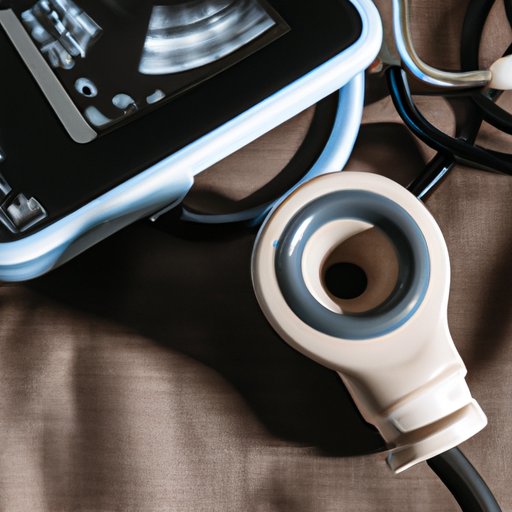Introduction
Ultrasounds are often used to check on the health of an unborn baby, but what if you don’t have access to one? There are other ways to monitor a baby’s health in the womb without having to resort to ultrasounds. This article will discuss how to know if a baby is healthy in the womb without an ultrasound.
Track Baby’s Movement
One of the most important things to track when it comes to a baby’s health in the womb is their movement. After about 18-20 weeks of pregnancy, it is normal for a baby to move around quite a bit. According to the American Pregnancy Association, “The baby may be so active that you feel movements from time to time. Most women describe the feeling of the baby’s movement as a gentle fluttering or rolling sensation.”1
It is important to track a baby’s movements because it can be a sign of their overall health. If a baby is not moving as much as they should be, it could be a sign of a problem and should be discussed with a doctor. Tracking a baby’s movements can also help to ensure that the baby is getting enough oxygen and nutrients.
In order to track a baby’s movements, it is important to pay attention to when the baby is most active and when they are less active. It is also important to note how often the baby is moving and how strong the movements are. This can all be tracked by keeping a log of the baby’s movements throughout the day.
Listen for Heartbeat
Another way to monitor a baby’s health in the womb without an ultrasound is to listen for their heartbeat. A fetal Doppler device is a tool that can be used to listen to a baby’s heartbeat in the womb. It is a handheld device that is placed on the mother’s belly and uses sound waves to detect the baby’s heartbeat.2
A fetal Doppler device is a safe and noninvasive way to listen to a baby’s heartbeat. It is important to use the device correctly in order to get accurate readings. It is best to use the device when the baby is most active, usually in the evening. The device should be placed on the mother’s belly and moved around until the baby’s heartbeat is heard.
If a fetal Doppler device is not available, a stethoscope can also be used to listen for a baby’s heartbeat. A stethoscope should be placed on the mother’s belly and moved around until the baby’s heartbeat can be heard. It is important to remember that a stethoscope is not as sensitive as a fetal Doppler device and may be harder to hear the baby’s heartbeat.
Monitor Mother’s Health
In addition to tracking a baby’s movements and listening for their heartbeat, it is also important to monitor a mother’s health during pregnancy. Monitoring a mother’s health can give clues as to the baby’s health as well. Some of the things that should be monitored include blood pressure and temperature.
Blood pressure is an important indicator of a mother’s health during pregnancy. High blood pressure can be a sign of preeclampsia, which is a serious condition that can affect both the mother and the baby.3 It is important to monitor a mother’s blood pressure regularly in order to make sure it is within a healthy range.
Temperature is also important to monitor during pregnancy. A fever can be a sign of infection, which can be dangerous for both the mother and the baby. It is important to monitor a mother’s temperature regularly to make sure it is within a healthy range.
Both blood pressure and temperature can be monitored at home using a digital thermometer and a blood pressure monitor. These devices are widely available and easy to use. It is important to follow the instructions carefully in order to get accurate readings.
Check for Weight Gain
Weight gain is another important indicator of a baby’s health in the womb. It is important to track a mother’s weight gain during pregnancy in order to make sure that the baby is getting enough nutrients. A healthy weight gain during pregnancy is typically between 25-35 pounds.4
Weight gain can be monitored by tracking a mother’s weight at regular intervals throughout the pregnancy. It is important to make sure that the weight gain is within a healthy range. If the weight gain is too low, it could be a sign of a problem and should be discussed with a doctor.
Watch Out for Symptoms
Finally, it is important to watch out for any symptoms of preterm labor. Preterm labor is labor that occurs before 37 weeks of pregnancy and can be dangerous for both the mother and the baby. Some of the symptoms of preterm labor include contractions, abdominal pain, cramping, and backache.5 It is important to watch out for these symptoms and seek medical attention immediately if they occur.
Conclusion
In conclusion, there are many ways to monitor a baby’s health in the womb without an ultrasound. It is important to track a baby’s movements, listen for their heartbeat, monitor a mother’s health, check for weight gain, and watch out for symptoms of preterm labor. By doing these things, it is possible to know if a baby is healthy in the womb without an ultrasound.
By following these tips, parents can rest assured that their baby is healthy in the womb without having to resort to ultrasounds. It is important to remember to always talk to a doctor if there are any concerns about a baby’s health.
(Note: Is this article not meeting your expectations? Do you have knowledge or insights to share? Unlock new opportunities and expand your reach by joining our authors team. Click Registration to join us and share your expertise with our readers.)
